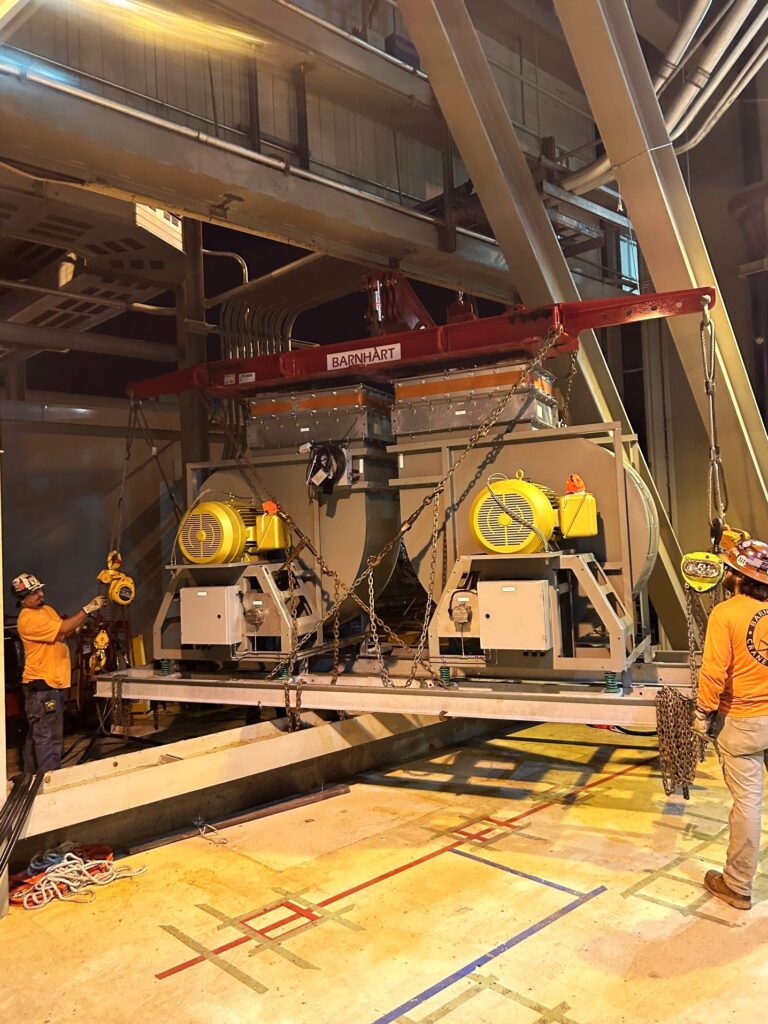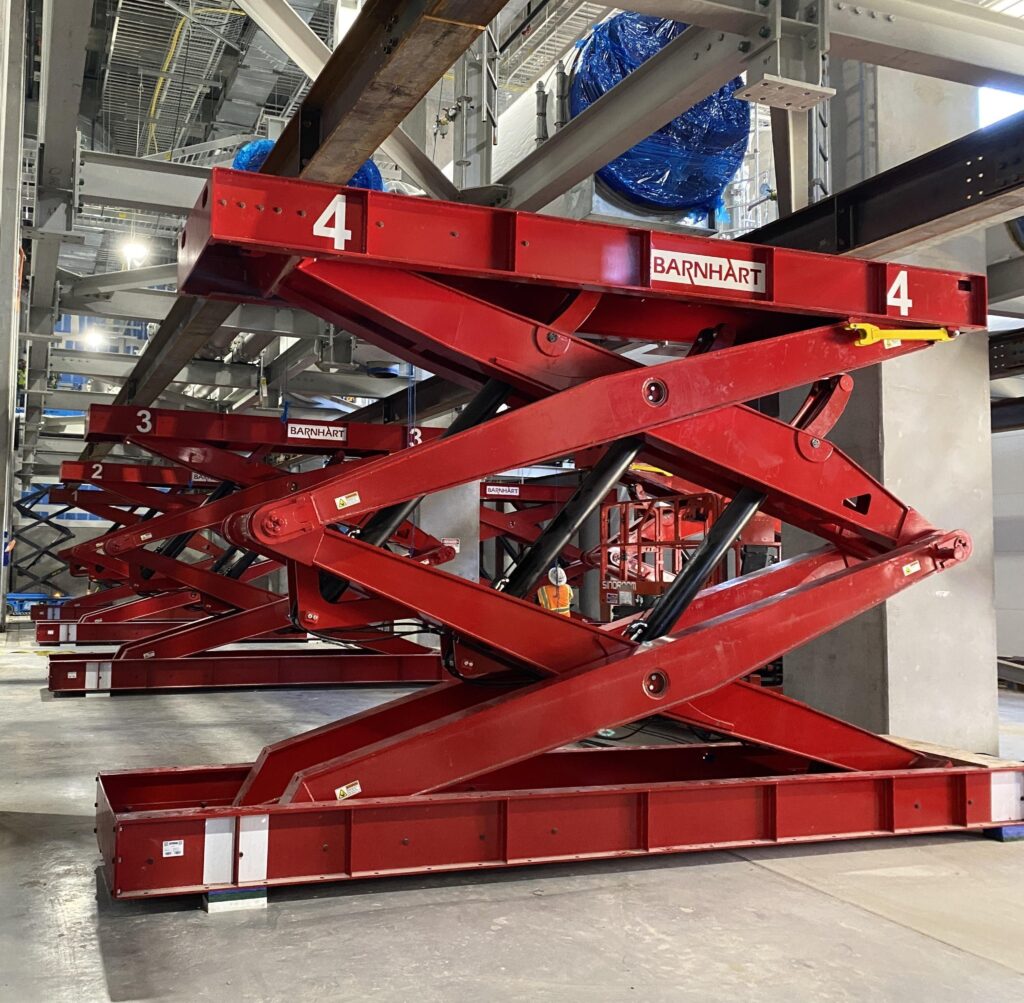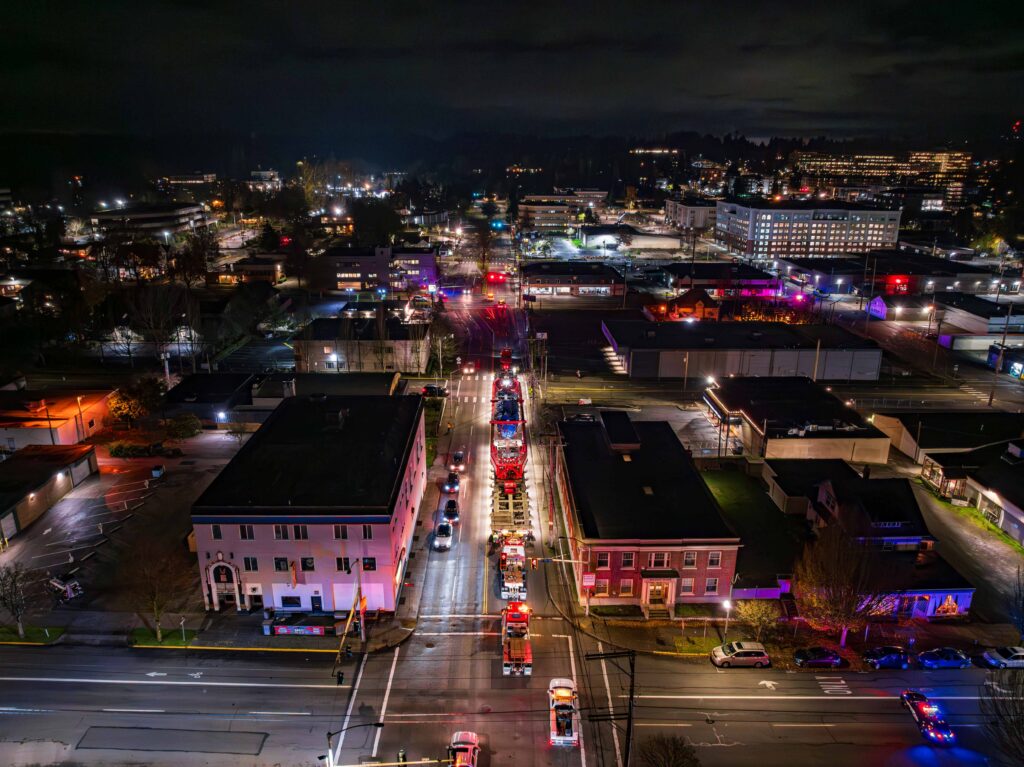TRIPLE CROWNS: BARNHART CLAIMS THREE JOB OF THE YEAR AWARDS
Barnhart took home three Job of the Year (JOY) awards in this year’s Specialized Carriers & Rigging Association (SC&RA) presentation held recently in Phoenix.
Rigging JOY Under $300,000: Tackling Tight Spaces
Barnhart was tasked with the complex removal and replacement of an isophase fan at a power plant. The existing fan had to be disassembled into four sections with unknown centers of gravity, while the replacement came in three sections with significantly offset centers. Innovation was critical to the project’s success.
The fan, located in the turbine building, had to be extracted through a wall opening into the plant’s switchyard. To ensure safety, Barnhart conducted daily Job Hazard Analyses and enforced a 100-hour safety standdown to address risks such as pinch points and suspended loads. Standard operating procedures were followed rigorously.
The project required several unconventional rigging and lifting solutions, including modifying an existing 27K Tipstick to handle the fan sections, which minimizing headroom requirements. In addition, the team used a 75-ton Lift Systems Mobilift, a 100-ton slide system, multi-lift jacks, and Barnhart’s counterweight cantilever system (MOCCS). These tools enabled both the safe removal and precise installation of the fan components.
Extensive engineering support backed every step, with detailed lift plans, jack-and-slide layouts, and custom-fabricated components ensuring accuracy and safety. Despite the project’s complexity, Barnhart completed the work in just three days.
Rigging Over $3 Million: Innovative Lifting Solutions
Barnhart supported the installation of 150 mechanical, electrical, and plumbing (MEP) modules at a semiconductor facility. Initially, the customer planned to fabricate 20 x 20-foot modules on site and install them one by one, requiring hundreds of field welds up to 30 feet in the air. Some pipes measured up to 64 inches in diameter.
Barnhart proposed a safer and more efficient alternative: fabricate larger module sections at ground level, then lift them into place. This reduced manpower needs, minimized high-elevation work, and allowed longer pipe runs, significantly cutting the number of field welds.
To enable this, Barnhart developed the Lift Tables (LT50s) and Jack Masters—innovative tools designed to handle varying footprints, weights, and center-of-gravity challenges. Each lift was custom-engineered with close attention to detail.
Once a module was ready, Jack Masters raised it from grade to about 40 inches. Lift Tables then slid into place to execute the main lift—raising the module in a single stroke to 26 feet while navigating obstructions. The tables’ holding valves allowed crews to safely complete bolted connections overhead.
This solution offered the customer flexible fabrication planning and drastically reduced scaffolding and welding requirements. It also enhanced jobsite safety by cutting manhours spent working at height. Barnhart’s approach shaved roughly three months off the project timeline, successfully lifted 41 large MEP areas, and introduced two groundbreaking tools to the industry.
See more details about this project in this blog.
Hauling JOY 160,000 to 500,000 pounds: Historic Haul
Barnhart was contracted to remove four Wartsilla engines from storage at the Port of Seattle and transport them to Centralia, WA. Each engine weighed 420,000 pounds. To manage pier loading concerns, the team employed multiple lines of SPMT and a 500-ton slide and gantry system to extract and stage the engines dockside.
The engines were then transported by barge to the Port of Olympia. For this, Barnhart used 24 lines of SPMT, 500-ton slides, 400-ton gantries, and a floating crane to complete the load-out. Upon arrival in Olympia, the motors were received and staged using SPMTs in preparation for over-the-road transport.
The project required working under longshore-controlled conditions and meeting strict Washington State Department of Transportation (WSDOT) regulations. To address height and weight restrictions, Barnhart designed, fabricated, and tested custom shipping frames secured with its Adjustable Rigging Link System (ARLS) and earrings to maintain proper ride height.
For transport, Barnhart used an 11 × 11 GS800 trailer combination that stretched over 372 feet and weighed just over 960,000 lbs. At the time, it was the longest permitted load in Washington state history and Barnhart’s longest to date.
Working closely with local, state, and county agencies, the team mapped a 45-mile route through the I-5 Corridor. Despite initial concerns at the Port of Olympia, Barnhart’s Los Angeles team developed a unique solution—backing the trailer 1.5 miles, removing one tree, and navigating a residential area to reach I-5.
The LA team successfully completed all four round trips in less than a month, incident-free.
See more details about this job here.



